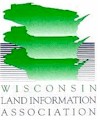Following their annual Board of Directors retreat in early April, the Wisconsin Land Information Association (WLIA) published a set of ambitious new goals for 2012 and beyond. Spurred on by a whitepaper authored by past WLIA Presidents Al Miller, D. David Moyer, and Ben Niemann, the Board decided now is the time to push for action in several areas.
The Miller et al. paper broadly calls for the “(establishment of) a statewide and seamless network of information about the physical, cultural, and economic resources associated with the use and management of Wisconsin’s land resources.” Among their observations the authors note, “for all our efforts we essentially have 72 county systems,” and that “only two of the original eight foundational elements have been completed (statewide), orthoimagery and digital soils.”
Miller, Moyer, and Niemann suggest three steps for achieving the full potential of the Wisconsin Land Information Program (WLIP):
- WLIA needs to give major attention to continued WLIP funding, including “capturing” a $5 deed recording redaction fee currently set to sunset on January 1, 2015.
- Geospatial tools are needed to facilitate the merging of databases from multiple sources. These tools, the authors propose, may be best developed in the private sector.
- State leadership. The authors do not propose in what form state leadership should come, or from whom, but they do note that much success thus far has been realized through counties working independently.
“Just Do It”
Inspired by the Miller paper, the WLIA Board identified three specific activities they intend to emphasize in the coming months.
The first is a pilot project aimed at collecting as much land parcel data as possible from counties, and assembling a seamless parcel dataset, “stored as a single common database schema, for the purpose of demonstrating the value of statewide data layers.” The ultimate purpose of this effort, as described on the WLIA Web site, is to educate top-level administrators and policy-makers. The team of volunteers participating in the project recognize the effort as a “one time operation” designed to demonstrate it can be done, and show how such as dataset can be valuable for important problems such as disaster cost analysis.
Their second big initiative is to create a statewide data integration plan intended to document the current status of WLIP “foundational elements” and what it will take to get them into a system for statewide use. Details of the initiative (who, how, when, etc.) are still in development.
The third goal for the year is “looking at the need for potential legislation to bring all of the needs of our state, regarding GIS/LIS together into one organized and focused effort.” No further details are available on the WLIA site at this time.
WLIA President Jon Schwichtenberg acknowledges these are aggressive goals for the organization, but he hopes “(people can) come together as a community of professionals and develop what we need to make our state successful.”
Watch the WLIA blog for more information and updates as they occur.

